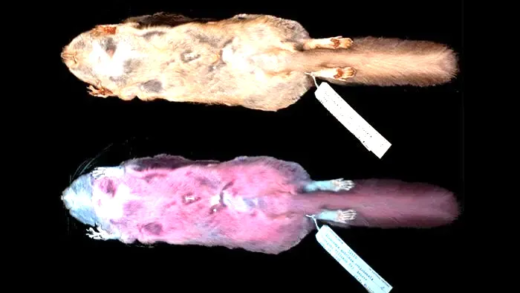Pangolins, known as scaly anteaters, face critical endangerment due to poaching and habitat loss. Countries like China, Vietnam, and Nigeria are significant players in the illegal pangolin trade. Global conservation efforts involve organizations like IUCN and WWF, focusing on education and habitat protection. Individuals can help by raising awareness and supporting conservation initiatives.
Pangolin Overview: What is a Pangolin?
Pangolin is a unique mammal, often referred to as the “scaly anteater.” This intriguing creature is known for its distinctive armor of overlapping scales made from keratin, the same material found in human nails. Unlike other mammals, pangolins have a long, sticky tongue that can extend up to 16 inches, allowing them to capture ants and termites, which make up the majority of their diet.
These solitary animals are primarily nocturnal, meaning they are active at night. They rely on their keen sense of smell to locate food and navigate their environment. Pangolins are found across Asia and Africa, inhabiting forests, grasslands, and savannas. Their unique features, such as the ability to curl into a ball when threatened, make them fascinating yet vulnerable species.
Pangolin Appearance: Characteristics of the Scaly Anteater
Pangolins have a remarkable appearance that sets them apart from other animals. Their bodies are covered with hard, protective scales, giving them a prehistoric look. The scales serve not only as armor against predators but also as a means of camouflage in their natural habitats.
They possess a long, flexible body with short legs, which are equipped with strong claws ideal for digging into ant hills or termite mounds. Their heads are small, with a pointed snout and small eyes, which add to their unique charm. Depending on the species, pangolins can range in size from about 12 inches to over 33 inches in length.
Pangolin Diet: What Do They Eat?
Pangolins are primarily insectivorous, feeding mainly on ants and termites. Their diet consists of:
- Ants
- Termites
- Occasional fruits and other insects
Their long, sticky tongues play a vital role in foraging. Pangolins can consume thousands of insects in a single day, thanks to their specialized feeding habits. They often use their sharp claws to break open nests and can dig deep into the ground to find hidden food sources.
This diet is crucial for maintaining the ecosystem, as pangolins help control insect populations. Their foraging behaviors also aerate the soil, benefiting plant growth.
Endangered Status: Why Are Pangolins Endangered?
Pangolins are critically endangered. The primary reasons for this alarming status include habitat loss and, most notably, poaching. The illegal wildlife trade has made pangolins the most trafficked mammals globally. Their scales, made of keratin, are highly sought after in traditional medicine, especially in parts of Asia. Furthermore, their meat is considered a delicacy in some cultures, further exacerbating their endangered status.
According to the International Union for Conservation of Nature (IUCN), all eight species of pangolins are threatened with extinction. These animals are not just facing immediate threats but are also struggling to adapt to rapidly changing environments. Protecting pangolins requires not only stopping poaching but also restoring their natural habitats.
Main Threats: What Threatens Pangolins?
The threats to pangolins are multifaceted. The most significant threats include:
- Poaching: This is the most severe threat. Pangolins are hunted for their scales and meat.
- Habitat destruction: Deforestation and land conversion for agriculture reduce their living spaces.
- Illegal wildlife trade: The demand for pangolin products, particularly in Asian markets, drives trafficking.
- Climate change: Changes in climate affect their habitats and food availability.
These threats are interconnected. For example, habitat destruction not only leads to fewer pangolins but also makes them more vulnerable to poaching. This complex web of threats highlights the urgent need for comprehensive conservation strategies.
Trafficking Impact: How Does Pangolin Trafficking Affect Their Numbers?
Pangolin trafficking significantly impacts their populations. It is estimated that millions of pangolins are trafficked each year. This illegal trade has devastating consequences:
- Population decline: The rapid loss of individuals has led to critical drops in their numbers.
- Genetic diversity loss: As populations shrink, genetic diversity diminishes, making recovery more difficult.
- Increased vulnerability: Fewer pangolins mean less chance for the species to thrive in the wild.
Additionally, trafficking fuels corruption and undermines conservation efforts. Countries with high levels of trafficking often struggle to enforce wildlife protection laws. This creates a cycle of destruction that can lead to extinction if not addressed immediately.
Countries Involved: Where is Pangolin Trafficking Most Common?
Pangolin trafficking is a global issue, primarily concentrated in specific regions. Countries heavily involved in the illegal pangolin trade include:
- China: Known for high demand for pangolin scales in traditional medicine.
- Vietnam: A significant transit point for pangolin trafficking.
- India: Home to several pangolin species, facing poaching pressures.
- Indonesia: A source country where pangolins are hunted for trade.
- Nigeria: Major exporter of pangolins to Asian markets.
These nations play critical roles in the supply chain, often due to cultural beliefs surrounding pangolin products. The illegal wildlife trade networks operate across borders, complicating enforcement efforts and exacerbating the decline of pangolin populations.
Global Conservation: What is Being Done to Protect Pangolins?
Global efforts for pangolin conservation are gaining momentum. Several organizations and initiatives are actively working to protect these unique mammals:
- International Union for Conservation of Nature (IUCN): Provides status assessments and promotes conservation strategies.
- Wildlife Conservation Society: Engages in habitat protection and anti-trafficking campaigns.
- World Wildlife Fund (WWF): Works to raise awareness and implement sustainable practices.
- CITES (Convention on International Trade in Endangered Species): Regulates international trade of pangolins, ensuring their protection.
Conservation efforts also involve community education, habitat restoration, and legal reforms to combat poaching and trafficking. Increasing awareness about the plight of pangolins is essential for their survival.
Awareness: How Can You Help Save Pangolins?
Individuals can play a vital role in pangolin protection through various actions:
- Education: Learn about pangolins and share information with others.
- Support Conservation Organizations: Donating to or volunteering with groups working to save pangolins.
- Advocate: Raise your voice against the illegal wildlife trade through social media and community events.
- Be a Responsible Consumer: Avoid products made from endangered species.
By taking these steps, everyone can contribute to the preservation of pangolins and help ensure that future generations can appreciate these remarkable creatures.





Comments are closed.